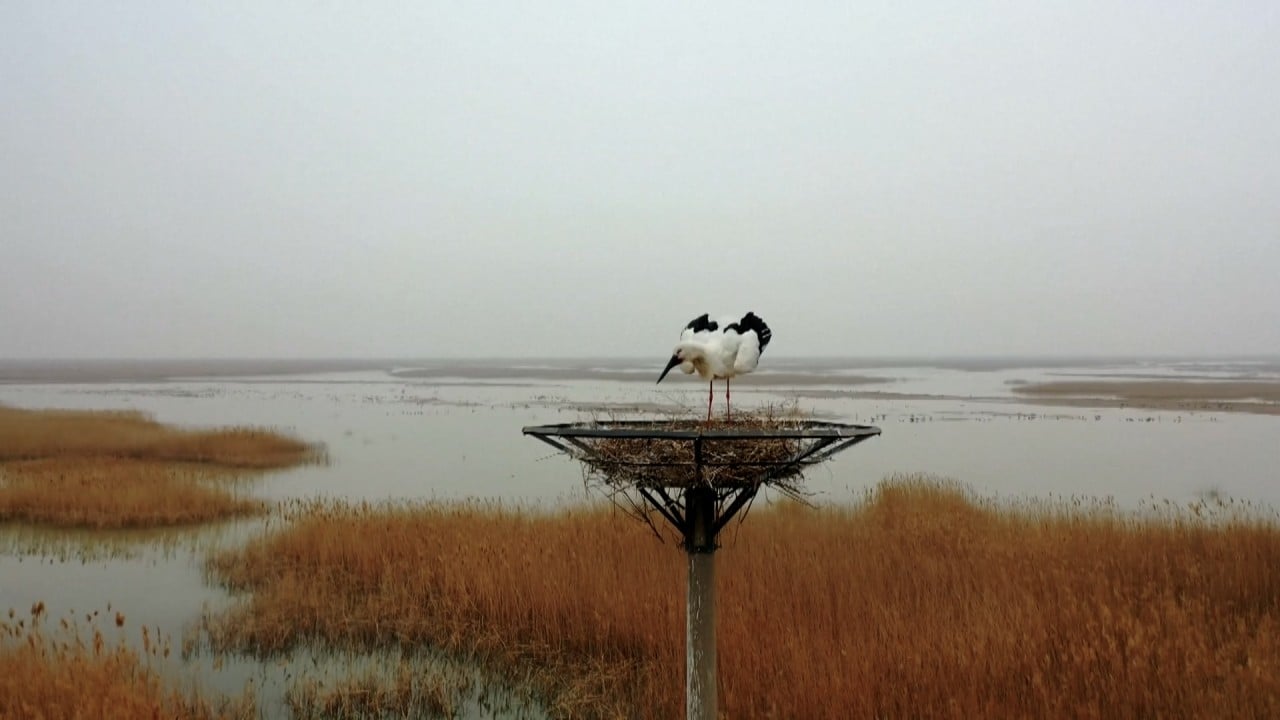The Oriental stork is a good example. This species is a nationally protected animal in China and is also listed as endangered on the Red List of Endangered Species compiled by the International Union for Conservation of Nature. Due to the lack of tall trees in the area, storks have been building nests on power towers, posing a safety hazard to the birds and potentially causing power outages for local residents.
To solve both problems, staff at the nature reserve built several artificial nests to help the birds avoid the risk of electrocution during migration.
In 2022, Huawei launched a pilot program in the region as part of its Tech4All digital inclusion initiative. The plan uses 5G, cloud computing and artificial intelligence (AI) technologies to improve biodiversity research and monitoring in fragile ecosystems. Since its launch, the artificial intelligence component of the pilot program has been trained to identify more than 47 different bird species and provide data on their migration patterns and other activities.

For biodiversity researchers working in nature reserves, this integration of technologies significantly increases efficiency. Before the implementation of 5G, cloud computing and artificial intelligence technologies, researchers had to physically venture into wetlands to observe bird behavior. Now, they can observe wildlife instantly from the comfort of their offices.
The application of science and technology not only reduces the impact of human activities on the natural environment, but also opens up more possibilities for biodiversity conservation. Shan Kai, a senior engineer at the Ecological Monitoring Center of the Yellow River Delta National Nature Reserve Management Committee in Shandong Province, said that watching without disturbing and guarding without disturbing is the greatest respect for nature by humans.
As the AI platform expands its training to identify a wider range of species, its accuracy continues to improve, with accuracy exceeding 90% for well-known species and large birds that the AI system has learned to identify.

The tech company’s commitment to promoting biodiversity echoes the theme of the 28th Conference of the Parties (Cop28) to the United Nations Framework Convention on Climate Change. This year’s annual summit, held in Dubai from November 30 to December 12, is considered the most important of its kind and discusses biodiversity, climate change, renewable energy solutions and other related topics.
Elizabeth Gray, executive director of the National Audubon Society, said ahead of Cop28: This year’s conference will play a key role in coordinating climate policies that affect us at every level. We must strive for outcomes that ensure birds and our own communities thrive. The association is a New York-based nonprofit dedicated to protecting birds and their habitats.
Around the world, photography and cinematography play a vital role in spreading conservation messages.

In Europe, French former meteorologist and active conservationist Christian Moullec also used technology to document his journey to help wildlife. In 1995, he noticed lesser white-fronted geese following a migration route from Germany to Sweden, a route that was becoming increasingly dangerous due to human activity. This led to his lifelong mission to create a safer migration route for geese.
His process begins by growing the birds from eggs and teaching them basic life skills. Once the birds reach adulthood, Mulek takes to the skies in his ultralight aircraft and leads them along new migratory routes, eventually taking them from France to their new habitat in Lapland.
Mulek not only establishes safer migration routes, but also raises awareness of the importance of habitat protection by sharing photos and videos of his journey with his followers. His photos show birds in flight or wading across lakes while digging into the dirt in search of food, highlighting the beauty and significance of bird migration.
Mulek said that in the past 30 years, one-third of Europe’s bird species have disappeared due to human activities. I sincerely hope more people can protect these creatures. When you fly with them and see the world from high above, you realize how important nature is to us.
#birds #eye #view #Huaweis #role #supporting #global #biodiversity
Image Source : www.scmp.com
